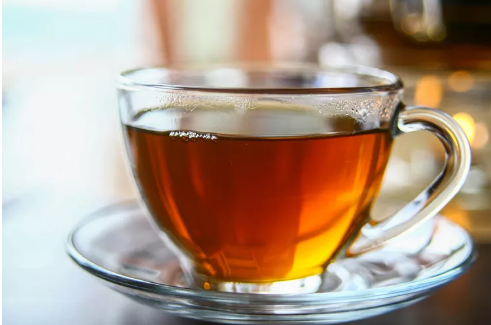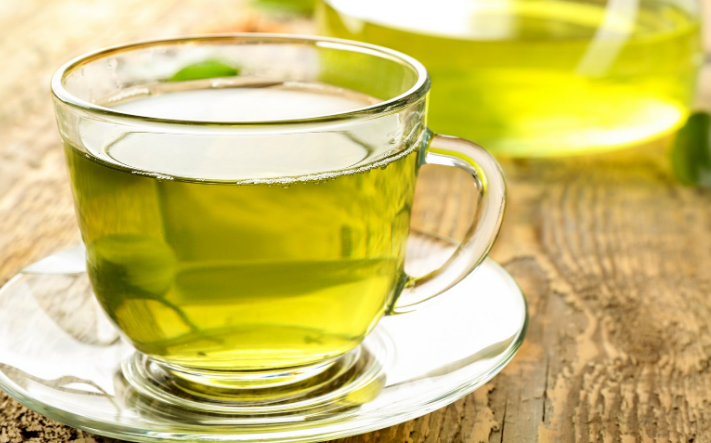The major difference between black tea and green tea is how the leaves are processed after being harvested, that is how they’re processed and the level of oxidation they experience. In simple terms, oxidation just means that the tea leaves have been exposed to oxygen for a period of time.
Black tea leaves getoxidizedafter being harvested, which means that they are exposed to the air to dry a process that ultimately impacts the tea’s aroma and flavoring, giving black tea that earthy, dark taste. On the other hand, green tea leaves are heated immediately after being harvested in order to stop oxidation. This is the main reason green tea generally taste lighter and more herbaceous than black tea.
In general, Black tea and green tea come from the same plant, although differences in their processing result in differences in caffeine, color, and taste. Both black and green tea are great drink choices, and typically will support your overall health when you drink them in moderation.
What is black tea?
To prepare tea leaves for black tea, whole leaves are cut at peak freshness from the tea plant, Camellia sinensis, and allowed to wither. Withering naturally reduces the amount of water in the plant, then the leaves are set aside to dry and oxidize in a process called fermentation. The chemical composition of the tea leaves changes through fermentation: the longer the leaves are allowed to oxidize, the darker the leaves will be. A lengthy oxidation process is what gives black tea its distinct, bold flavor.

Black tea is typically high in caffeine, containing about half as much caffeine as a cup of coffee. Green tea is usually lower in caffeine, containing about half as much caffeine as black tea.
Green tea contains the antioxidant EGCG which contains medicinal properties that can be used to fight various diseases. Green tea contains caffeine, which is a known stimulant that has been shown to improve brain function including better moods and more focus. Other benefits that black tea may offer are improving gut health, reducing the risk of stroke, reducing blood pressure, and lowering blood sugar levels.
Also Read: Difference Between Espresso And Latte
What is green tea?
Green tea gets its name from the emerald green colour created when brewing this tea. With origins dating as far back as 5,000 years, green tea is commonly drunk and grown in East Asia where its health properties are highly valued.

While the preparation process for green tea begins in the same way as that of black tea, the amount of fermentation is different, yielding drastically different results. Green tea leaves are sometimes allowed to wither slightly—but are then either pan-fired, oven-dried or steamed to prevent oxidation from taking place. Since the leaves don’t undergo fermentation, they retain their green color and produce a lighter, more grassy taste.
There is no nutritional value in terms of macronutrients in green tea, but the drink’s primary benefits lie in the bioactive compounds it contains. Green tea as a beverage or dietary supplement is promoted for improving mental alertness, relieving digestive symptoms and headaches, and promoting weight loss.
Green Tea vs Black Tea: Key Differences
| Points of Comparison | Green Tea | Black Tea |
| Name | Camellia sinensis | Camellia sinensis |
| Description | Green tea is a variety of tea that has not undergone the oxidation process used in black tea. | Black tea is a variety of tea that is oxidized during production. |
| Processing | Partially Fermented. | Fermented and oxidised. |
| Nature | It has a pale golden color to a rich, mossy green. | Leaves have a dark brown or black shade — reddish coppery colored. |
| Taste | Taste is lighter and quite delicate. | Taste is more rich and intense. |
| Antioxidants | Yes | Yes, but less than green tea due to more processing. |
| Caffeine Content | 8—30 mg per cup. | 40—100 mg per cup. |
| Acidity | Low | High |
| Best Consumed | Without milk. | With or Without Milk or with a dash of Lemon. |
| Notes | Have oceanic and vegetal notes. | Usually have a honey, nutty and spicy notes. |
| Theine Content | Less | Black tea contains more theine than green tea. |
Key Takeaways
- The key difference between black and green tea is how they’re processed and the level of oxidation they experience. In simple terms, oxidation just means that the tea leaves have been exposed to oxygen for a period of time.
- To make black tea, the leaves are first rolled and then exposed to air to trigger the oxidation process. This reaction causes the leaves to turn dark brown and allows the flavors to heighten and intensify.
- Green tea is processed to prevent oxidation and thus much lighter in color than black tea.
- Black teas tend to brew up a rich, reddish copper-colored brew. They also tend to have a stronger flavor, with notes of stone fruit, malt, honey, and spice.
- Green teas tend to be lighter and more delicate. These teas may be anywhere from a pale golden color to a rich, mossy green. Green teas usually have a lighter body, and may have nutty, vegetal, or oceanic notes.
- Green tea contains less caffeine than black tea — about 35 mg per 8-ounce (230-ml) cup, compared with 39–109 mg for the same serving of black tea.
- Both green and black tea are great alternatives to coffee for those who want a mood lift without coffee’s telltale restlessness.
- Green and black teas also contain the amino acid L-theanine, which is not present in coffee. In general, there is slightly more L-theanine in green tea than black tea, though the amounts can vary considerably.
- Black tea is typically prepared with a splash of milk and maybe even some honey. Green tea, however, is usually consumed as is, with a drop of honey, or a squeeze of lemon wedge. Sugar can be added to both black tea and green tea for a bit of sweetness.